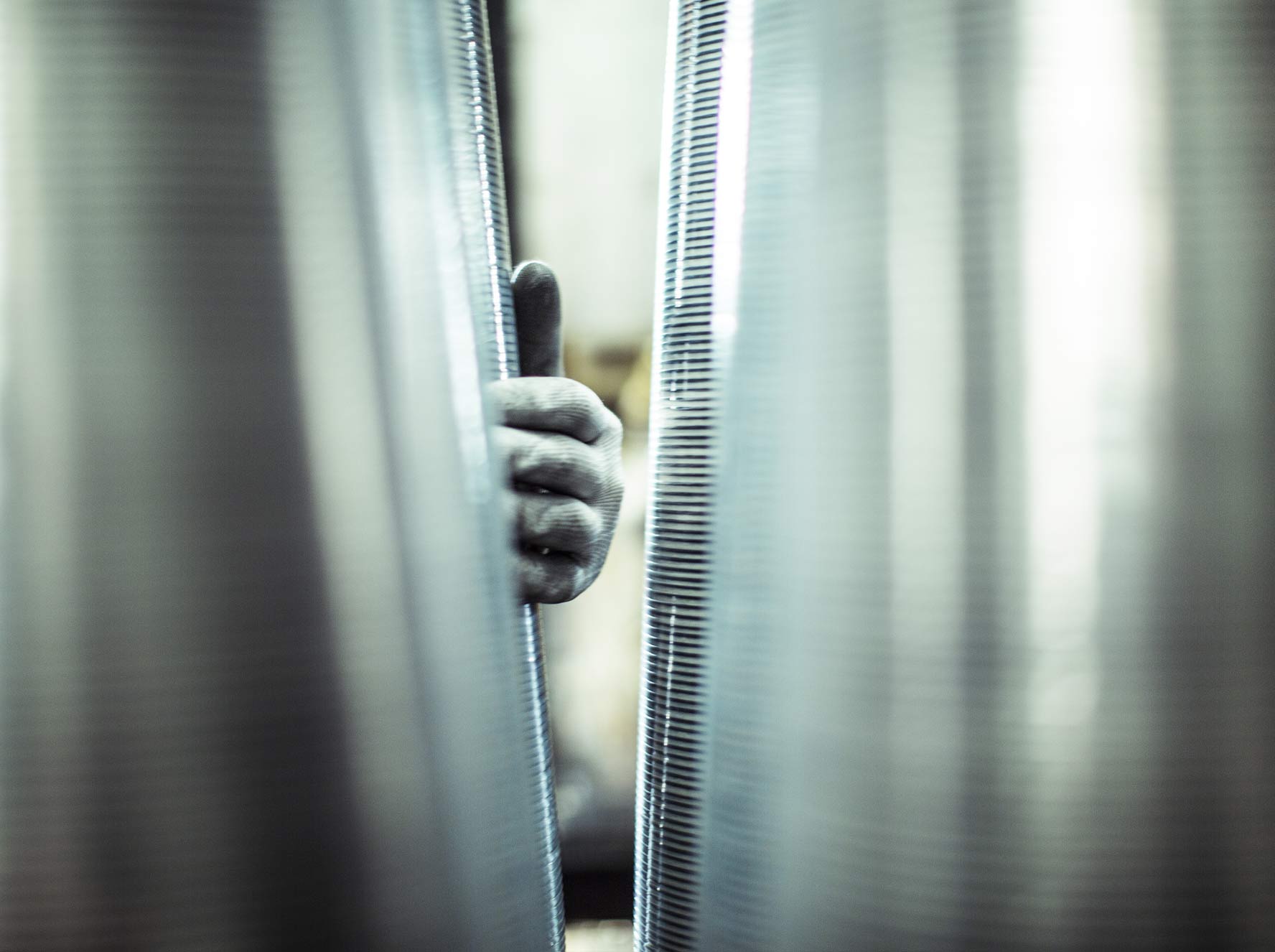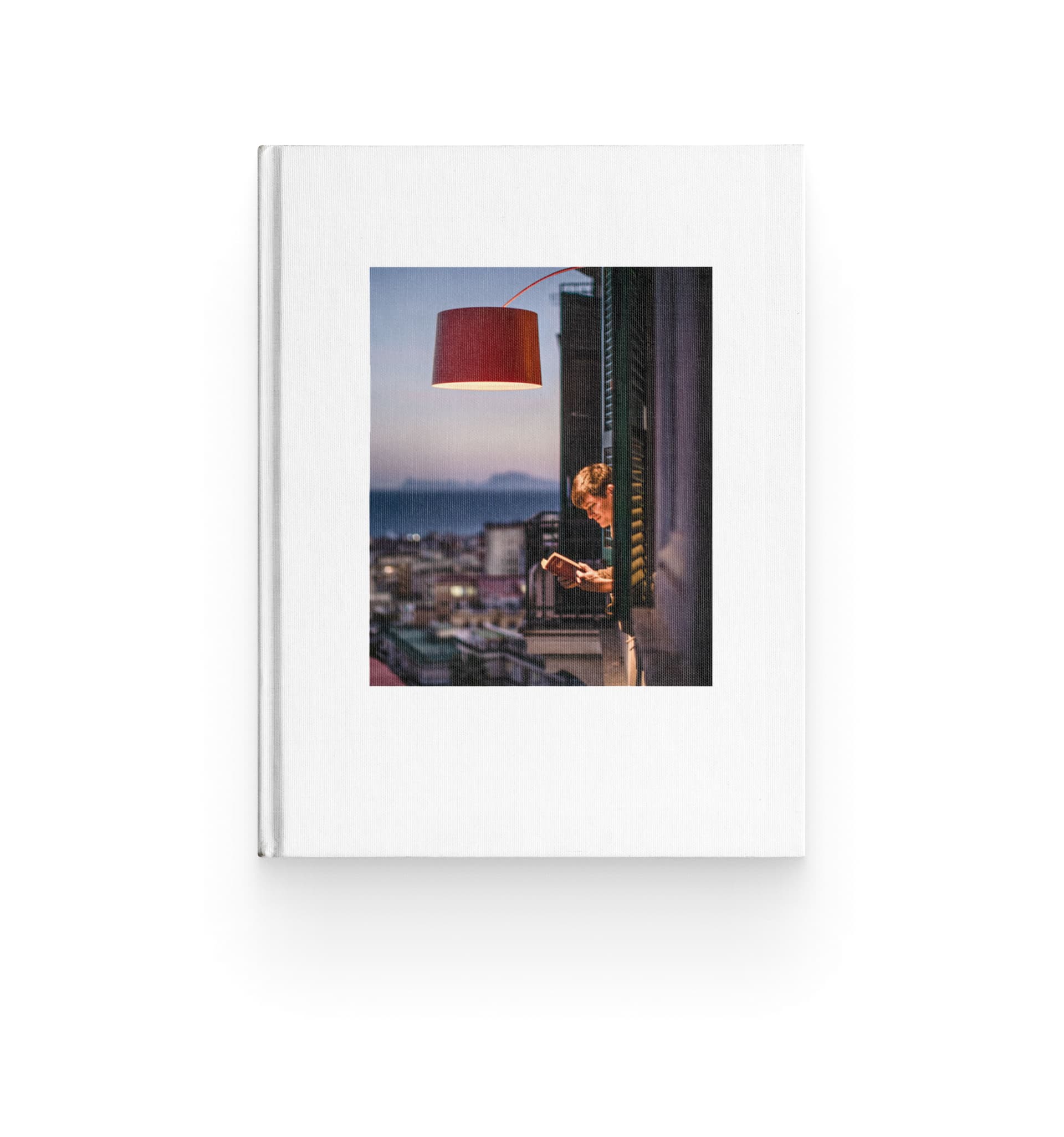The hidden dimension
by: Manolo De Giorgi

I am periodically reminded of the valuable observation made by Enzo Mari in a conversation from a few years ago.
During a discussion of the tangible contributions of various entrepreneurs to Italian design, Mari pointed out with his radical outlook that Italian products had always been “designed as industrial but were actually hand-crafted”.
This subtle distinction clarified a long-standing illusion about Italy’s industrial process, while revealing a very important element of Italian production long hidden out of sight.
For decades, the desire had been to “bury” the story of craftsmanship, by passing it off mainly as a matter of size: large or medium-sized production was considered industrial, whereas small production runs were referred to as craft. It was evident that, using this parameter, craftsmanship ended up being largely obscured and relegated to being considered an obsolete and outdated dimension, while large-scale production would open the door to bigger markets.
At the same time, there wasn’t real interest in drilling down to what was really happening in the production scene and actually performing an X-ray of what was going on in Italy in the intermediate passages of production, to verify the actual contribution of the machines versus the continuous adaptation and qualitative checks performed by a skilled worker (or modern craftsman). The design world for their part focused on the planning phase, the design culture and its leading players – the designers – emphasizing the added value provided by this discipline to the cultural world. Meanwhile, quality craftsmanship continued to play an essential role in the product, satisfying all the most extreme demands and excesses sought by various designers under the protective banner of a so-called “industrial” logic.
All this took a different direction at the turn of the 21st Century. In a world that had become global with the presence of new players and emerging markets, , the industrial culture became a now universally available given, one that was simplified and extended in its technological aspects, which now appeared within reach of all latitudes of the planet. Similarly, the culture of designers in a super-saturated world devoid of genuine functional needs (or at least where the supply of project proposals exceeded the demand) became a weak proposition, and innovation was continuous yet in tiny leaps forward.
Both these phenomena opened up design to an avenue of simplification yet at the same time led to products afflicted by an alarming homogeneity. What seemed to escape all this was in fact the underlying quality craftsmanship which remained a feature of industrial processing. Here, the craftsman in person might still have been able to make a difference, thanks to his contribution of as yet semi-hidden recipes and flashes of dexterity that now came into play as something that made the difference and as an ancient heritage never revealed beforehand. Subsequently during the first decade of the new century, when the industrial turnover for certain products thinned out to the point of barely remaining, even the alibi of figures had to be resized and the role of the craftsman was restored to the honour of the world.
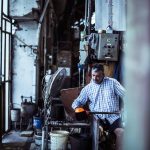
Here is the topic on which to focus: who does the research today? Who cares about complexity?
Mega brands born with the new Century have had other things to think about and the reason they were set up was because they wanted to tidy up the complex “distribution” aspect of design, at least the 40% or 50% which with the opening of the global market created particular problems or just as many opportunities. These companies did not have a stake in performing product-oriented research. Economies of scale demanded that branding and rationalisation constitute the central focus of the new structures, but the type of product that resulted from this concentration inevitably had a taste of mass market: in other words, commoditized large supplies of the new economy became sufficiently flavourless so as not to create any unfeasible leaps, thus establishing themselves as products of “undetermined quality”.
In contrast, the craftsman emerged as the only one able to offer quality and uniqueness, using simple and flexible methods, producing just in time at relatively low costs. There would still be room for error or failure allowing sustainable experimentation without excessive investment in a market opportunity, which over the last ten years already appeared rather tricky. The craftsman ended up becoming the only one capable of taking bets in the most remote corners of emerging countries, able to craft the item a first time and then perhaps repeat it with a minimal variation thereafter. Or some craftsmen went the direction of operating within the context of a single piece at a time in the “made to measure” sphere, where a prototype and production piece merged into a single-production-run specimen, more often than not with a high degree of complexity. In this respect, Italy proved to be extremely modern in keeping with the observation made by Luigi Pasinetti: “The wealth of an industrial nation is something completely different from that of pre-industrial nations, or rather, it is something much more profound. It is not constituted by the wealth of goods it possesses, but rather by the technical expertise on how to produce them” (1).
This phenomenon was also noticed from the perspective of art criticism during a phase of enormous industrial expansion in the late Seventies, by Pierre Restany. He saw the importance of craftsmanship when he noticed how Italians managed to be perfect cabinet makers of plastic, as they had learned to recognise “the intelligence of the material”. This observation could subsequently have been extended to all new materials that emerged from then on.
The essence was the expertise in isolating steps of the production process so that a particular phase of the design could be carried out in an improved way, and then connected back to subsequent phases in the production chain: A production line divided into segments, which allowed an almost seamless passage from one to the other of these processing phases. As if editing scenes of a film, this system allowed combining contrasting features together, where relationships and close ties were built on the principle of quality.
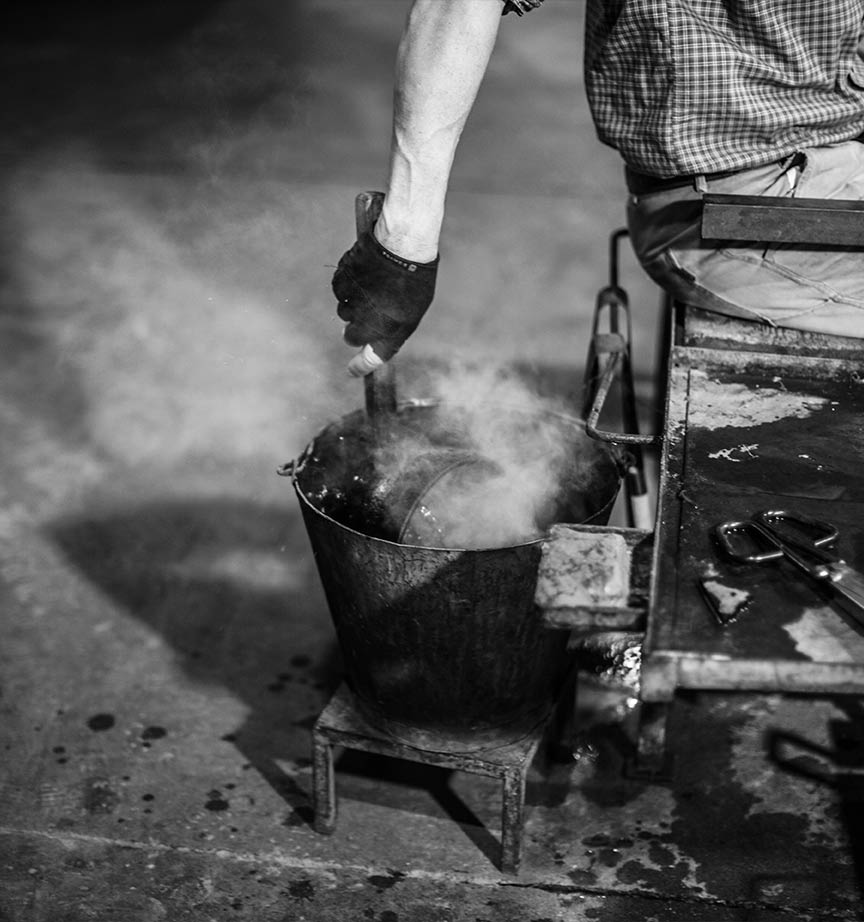
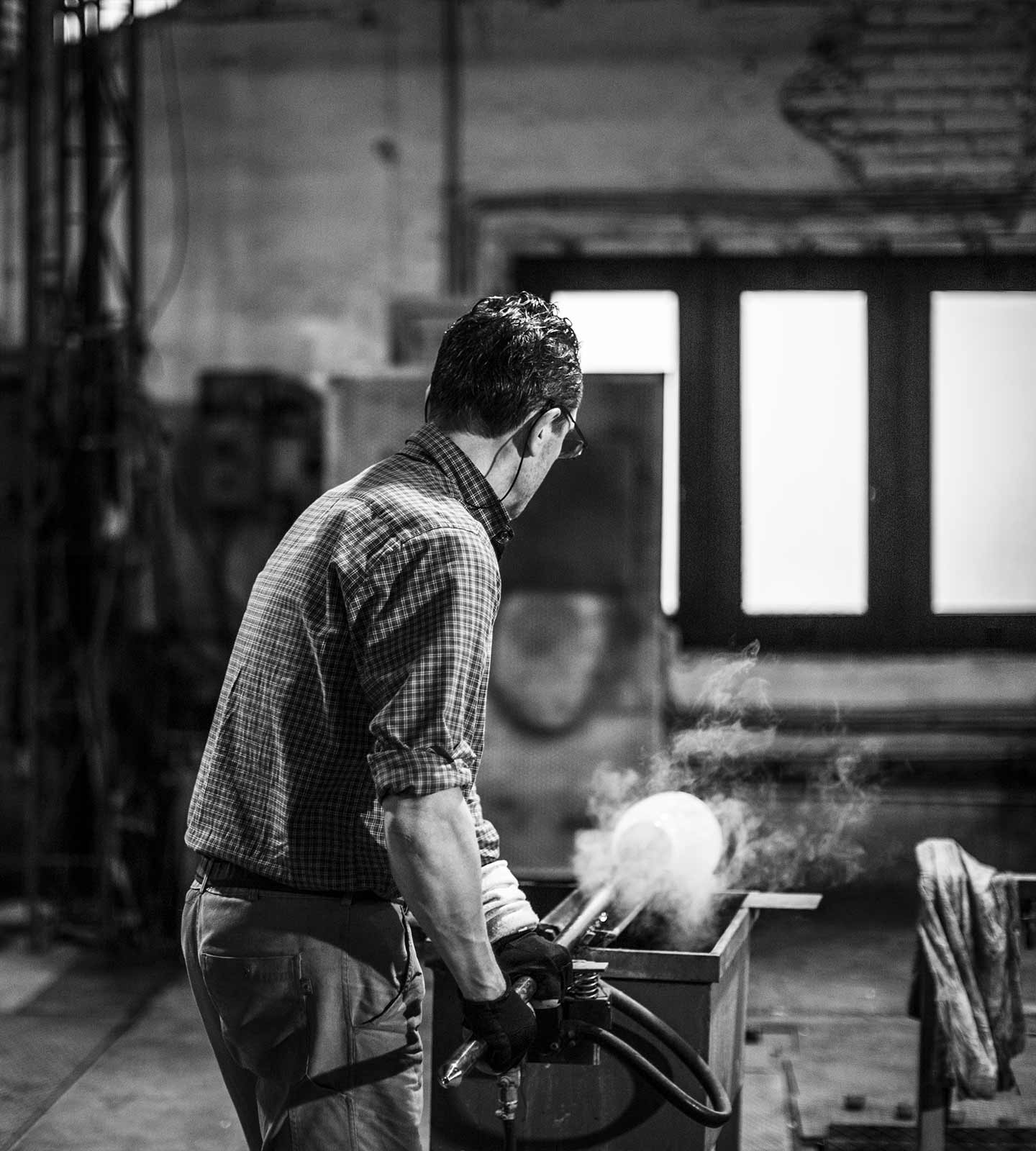
Foscarini’s product composition revolves around three simple structures of the production process linked to three distinct ways of interpreting raw material.
These go parallel with processes for modern design in that they are led by progressive transformations of raw material, shifting its use and formats. In actuality, it is no longer raw material but semi-raw material, as it’s been transformed by industrial re-processing, resulting in a secondary product, a hybrid or a pre-processed product that can be transformed into something else. In this condition of constant transformation, it is no longer its mass that defines its quality but the possibility of extension and its versatility, especially when interpreted in terms of “strength+light” “weight+elasticity.”
The three companies in focus are Crea, Vetrofond and Faps with 7, 47, and 35 employees respectively, plus maximum two owners per company. These companies work with cement, glass and carbon fibre – the materials that exemplify how a new understanding of raw materials is necessarily accompanied by a phase of adoption and industrial repurposing in the 21st century. The type of conversion is not the same as what happened in 1945 when Iso went from boilers to motor scooters or when Piaggio went from building the shell-structures of bombers to scooters. But it is still the result of reconsidering the company’s methods of production as a result of market disruptions, in the current case, disruptions over the last fifteen years. It is a change in perspective while maintaining specificity. If the framework within which this transformation takes place also changes, the theme of industrial craftsmanship once again becomes a key element of Italian design.
We see a fictional figure of the worker-craftsman, the boss-designer, the producer-publisher that reappears on the scene. This very much represents the Italian way of inventing a sort of all-around problem-solver in a single person that lies between technique and form, detail and performance, quality sub-contracting and concentration of various processing stages. Examples of these pivotal figures central to our history include Natale Cappellaro, a worker at Olivetti who was initially an assembler of MP1 typewriters and then designer of the revolutionary multi-operation calculators; or engineer Carlo Barassi who during the Second World War started with foam pads to protect the tanks on bombers, then went on to the new seats in elastomers for cars, and then the Arflex domestic padding; or Enrico Garbarino who let Ettore Sottsass convince him to venture into the production of “false” laminate surfaces, by coupling some pressed melamine resins to a sheet of plywood or chipboard, with which he invented the Abet Print. In casting the limelight on Crea, Vetrofond and Faps, Foscarini proves that it believes in this narrative.
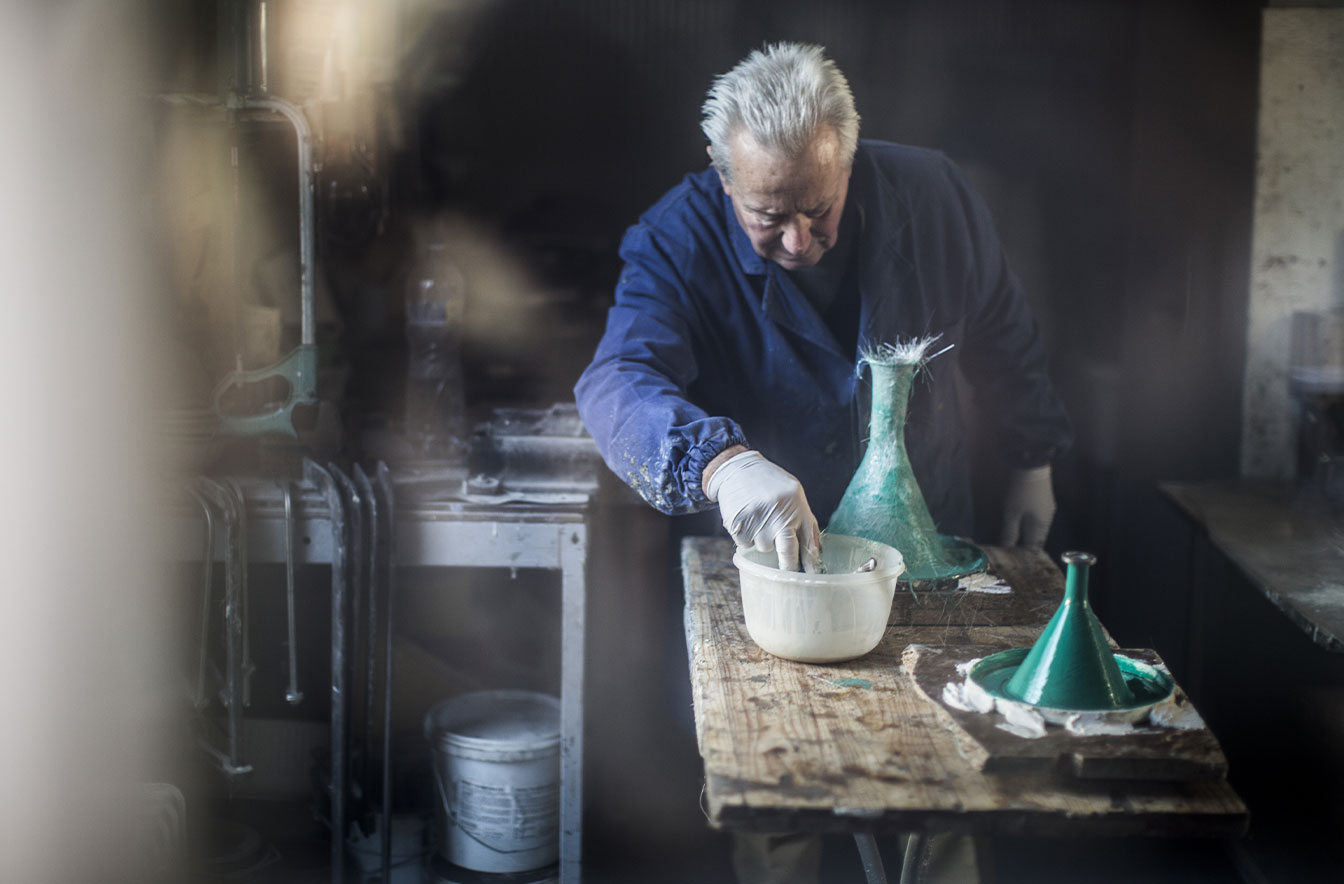
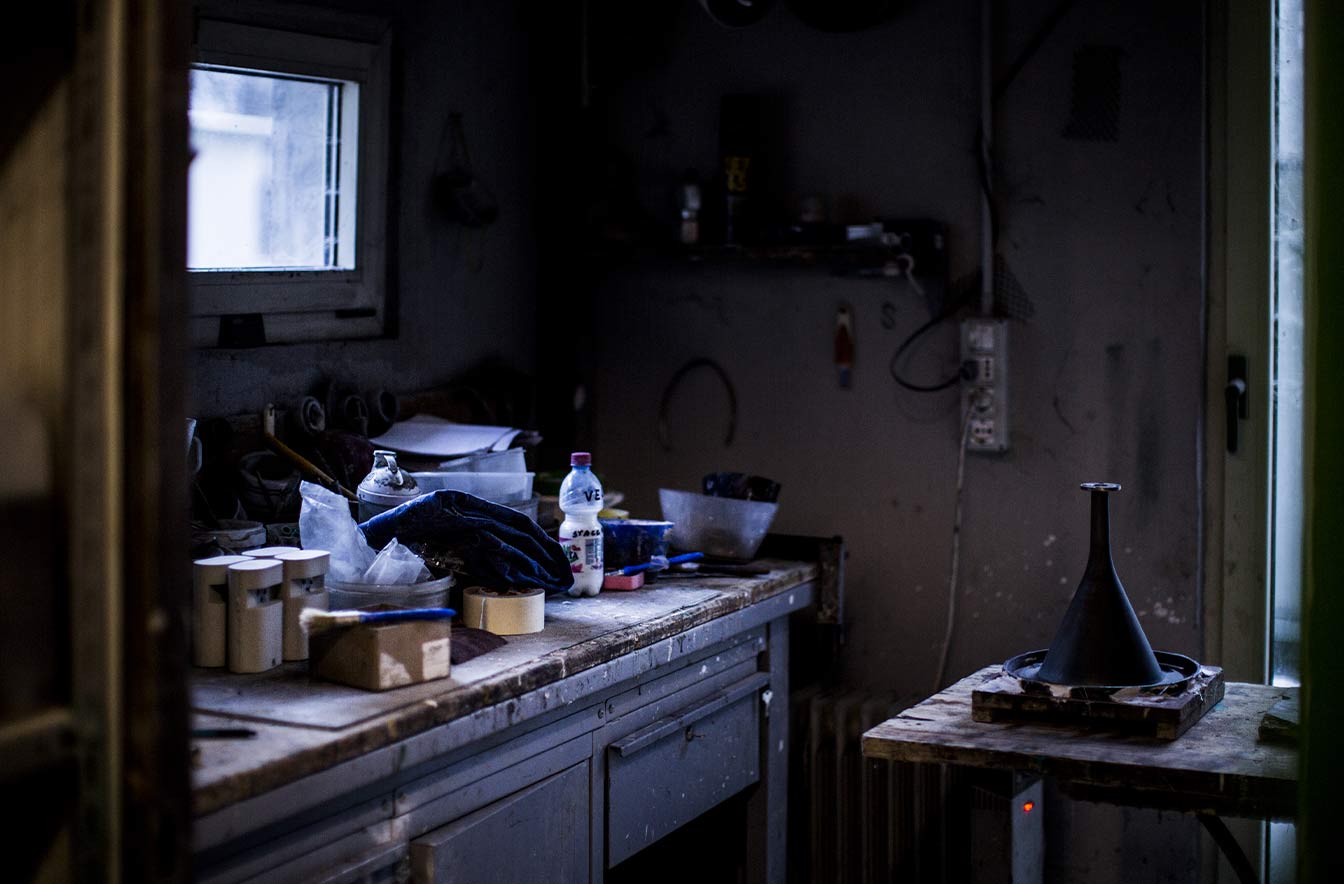
Crea was founded by Giovanni Piccinelli. He started out as a cement layer and, after working for a while in Switzerland – the homeland of exposed concrete and its most refined treatments, he opened his own company in Darfo Boario. Building products and concrete components made up the majority of the output until the end of the Nineties, when the crisis of the construction industry affected the market. Piccinelli almost gave up and started producing vases as a pastime. At that exact moment, he began to receive requests to produce lamps and furnishing elements for outdoor use. He thought that, with smaller-sized products, he would run fewer risks. So he accepted the challenge. His expertise with removing pieces from the mould and with the problems of undercuts enabled him to easily overcome the substantial change in scale of the product.
Meanwhile, concrete building materials remained the core tradition of the company, but the output shifted from thresholds, kerb stones and balustrades, to special orders at a “made-to-measure” scope. For Vittorio Moretti and the Petra cellars designed by Mario Botta in Suvereto, Piccinelli took a gamble and proposed a unique solution to the complex issue of cladding 200 steel pillars. The ribbed concrete sheaths, measuring 3.80 m high and weighing 1500 kg each, were made in two pieces and are a beautiful example of component design.
Crea’s partnership with Foscarini began on an initially unfeasible project: The Aplomb lamp with a cement reflector by Lucidi e Pevere.
Crea had up until that point relied on a mould manufacturer from the Bergamo area, who thought the small and delicate cone of the Aplomb lamp was mainly a nuisance. When the mould supplier announced that he was retiring, Piccinelli decided to simplify the process by taking charge of the mould production technique. And that is exactly what he did, as depending on a supplier for a crucial phase of the design created too much uncertainty. So Piccinelli learned to make the moulds himself in one of the company’s factory buildings, where he also produced moulds in rubber and silicone. Since developing the mould was at times a rather lengthy process, it was better to have do it in-house.
Indeed, there were between 200 and 300 test lamps done, before Crea achieved the final solution for the Aplomb.
While at the beginning, the lamp was produced from approximately 5 moulds, these days, Crea uses about 45. Out of a total staff of seven, the production of Aplomb is managed by three workers (Vasile, Radu and Mamadou), two of whom are in charge of casting, and the other finishing. The workers are involved from the casting onwards, but they do not touch the prototypes.
This conversion to the domestic object began with Piccinelli’s children, Ottavio (in charge of production) and Carlo (designer in charge of the commercial sector), and it has not been easy. Especially in the sandblasting phase, particular care was required to ensure controlling the consistency in the irregularity in the grain size and open pores of the cement reflector, which the workers initially underestimated.
Ottavio took the three workers in charge of producing the lamp to the Salone del Mobile in Milan, to make them understand that these objects were intended for the home and for a world where the finish had quite a lot of value.
So before moving on to the sandblasting phase, they discovered the importance of trimming the edges of the narrow and wide part of the cone by hand with a hose, a crucial step following the burring of the cast. After the lamps pass through a water repellent material finishing process, they are first submitted to the scrutiny of quality control by Foscarini personnel, then sent to Pordenone where the lamps undergo electrification, and then returned to Foscarini’s facility in Marcon.
Piccinelli had to grow accustomed to the pace and precision of quality controls that are carried out approximately twice a month, with specific measurements to gauge to check the thicknesses of the cement. In contrast, previously, the rejected building components after the dismantling of the formworks at times even had differences of several centimetres. This cement is now moving towards miniaturisation in the form of pen pots, in curtain rails, in taps that they produce and where they monitor this “shift” to perfection.
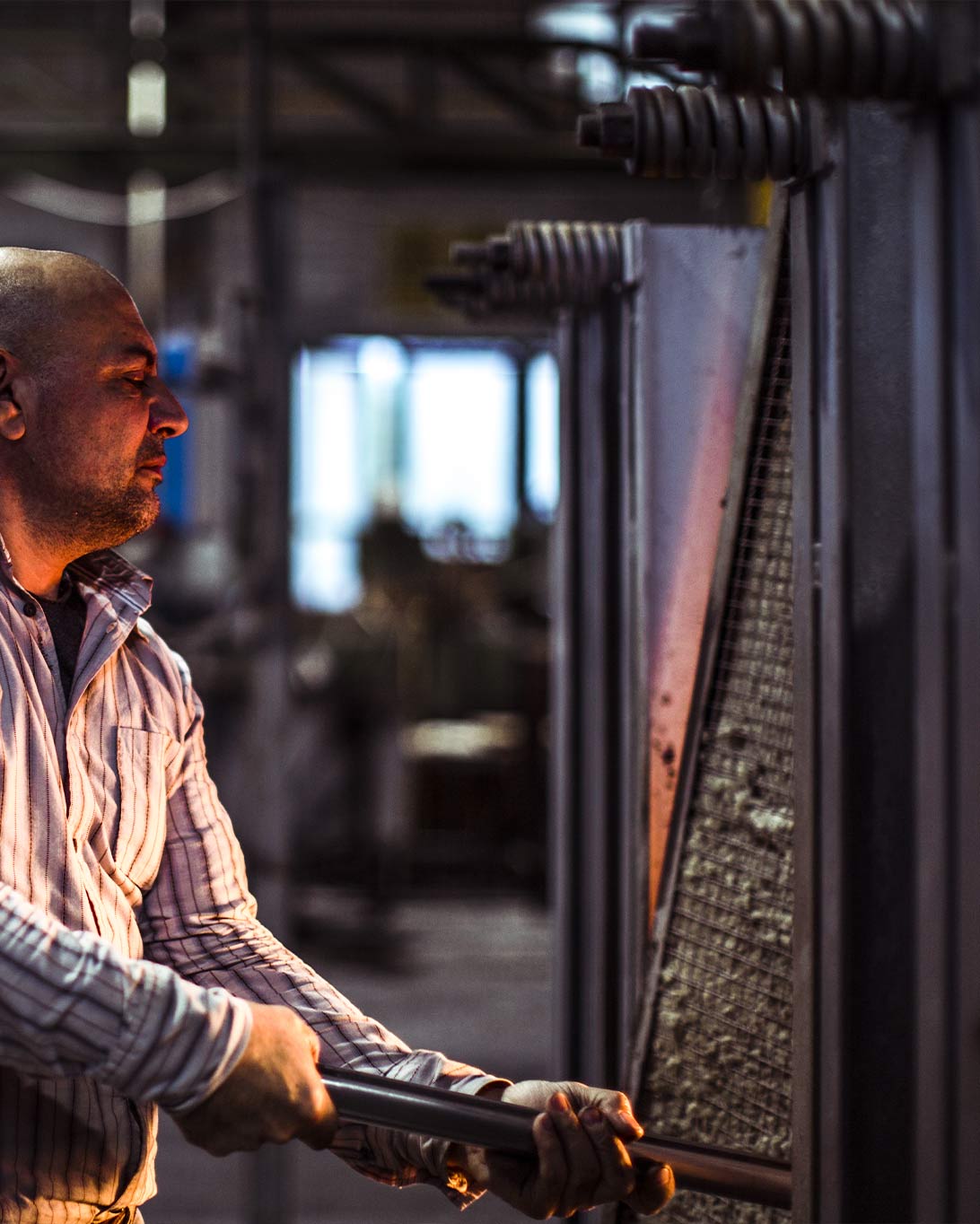
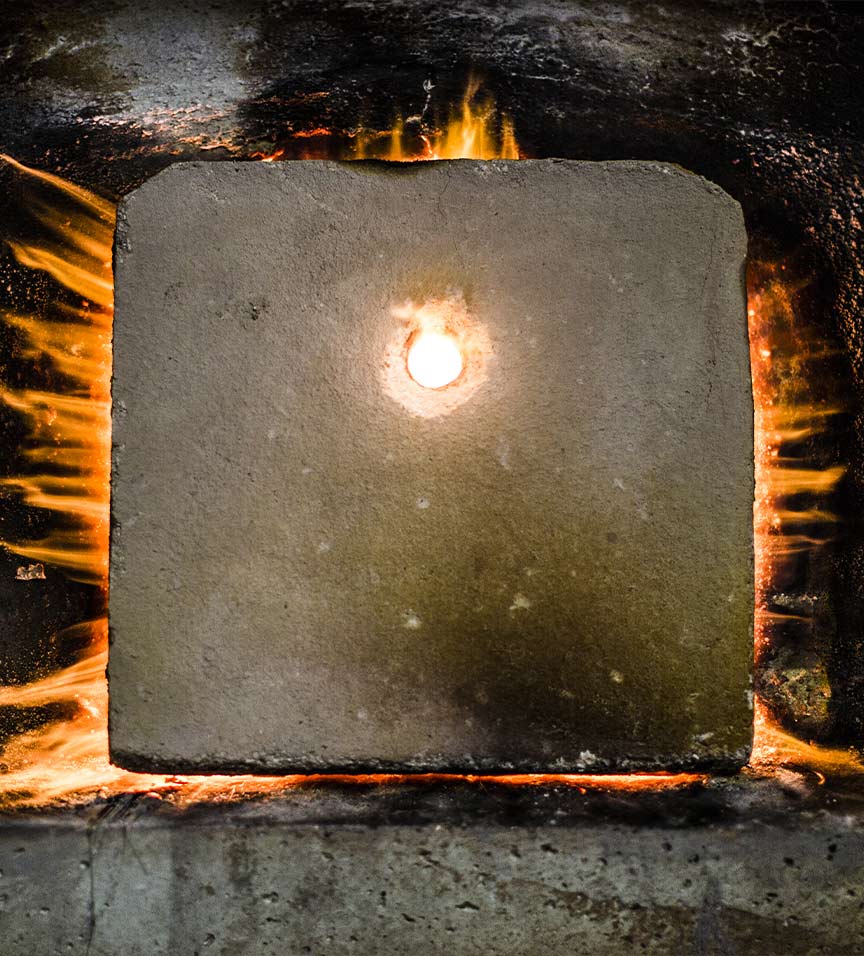
Giancarlo Moretti, one of the two owners of Vetrofond says that he tackles all glass processing phases but considers himself a specialist in the Zanfirico or vetro a retorti technique, a method whereby small rod bundles are heated in a furnace and then twisted to obtain a spiral pattern. He says “everyone” uses his facility in Casale sul Sile to blow glass. Louis Poulsen gets supplies from Vetrofond every time they abandon the metal sheets and acrylic globes to tackle glass for the ceiling lamps by Arne Jacobsen or the reflectors of Verner Panton. To blow and decorate glasses, the company prefers to look toward the Veneto region and not to the Germanic/Bohemian territory.
Vetrofond and Foscarini has had a relationship for years and it constitutes an important 20% of Vetrofond’s turnover. The skilled Italian glass-blowers go through a lengthy training which takes at least five years. The teams are organised into 3-5 workers who specialise in models by specific manufacturers. In the case of Foscarini there are two teams in charge of production and all five team members switch roles between blowing and finishing. Once the worker has taken the pea, a pear-shaped bolus, with his cane, the vitreous paste is blown and adapted to the mould. This process remains craft-based and little can be done with machines.
In the case of the Rituals lamp by Ludovica and Roberto Palomba, the blowing phase takes about three minutes and the finishing about ten minutes. To obtain its particular type of chalky finish capable of enhancing the unevenness of the stripes, the lamp is wheel-ground on the outside and processed in a specific way to avoid spots and to obtain a uniform distribution of the white. This method also ensure glass to emit a warm tone similar to that of rice paper similar to Isamu Noguchi’s lamps. Another way to transfigure the effect of glass is to use dull colours that merge with the lamp’s surroundings. In the Buds series of lamps by Rodolfo Dordoni, the emphasis is on lowering the glossiness of the glass by using deliberately cold hues of green, grey and brown that involve a specific dosage of tones and the addition of minerals with iron oxides. Each test run commissioned by Foscarini – and its secret recipe – is quite complex and costly counting in “about 100 kg of material, the cost of the gas, labour and that of non-production”. But it’s clear from talking to him that, Moretti, rather than turning up his nose to the challenge, it actually spurs his passion.
Crea and Vetrofond thus produce innovation in the use of materials, which means, above all, the reversal of its defining technical effect
Cement is rendered for domestic use and to lose its brutalist connotation, and blown glass to lose its flamboyante dimension and camouflage itself as much as possible amid the furniture. The result is a disorientation in the perception of the material.
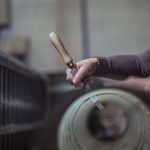
The third case, Faps, represents an interesting example of developing an innovative but still little exploited material that is rarely used in the domestic environment – carbon fibre, and, as a result, successfully re-orientating the company’s core business, which was initially the production of high-performance fishing rods.
Faithful to the logic of composite materials, Faps integrates fibreglass and glass resin with new carbon fibres. For its owner, engineer Maurizio Onofri, this meant opening his market up to a whole new range of commodities and products for diverse sectors, wherever performance and light weight are sought for components. Thus the company has begun to produce industrial rollers, bicycle frames, nautical products, such as cylindrical spinnaker poles, slats for sails and extensions for rudders, as well as continuing to produce fishing rods.
The design world had for years had very little to do with fibreglass (Designed by Richard Sapper in 1986 for B&B Italia, the sophisticated Nena armchair with a fibreglass frame turned out to be too complex for production). Experimentation with the material had been limited to the few experiences of Alias in the seating sector, in trying to find a specific logic in the new composite material that does not imitate any other materials.
The floor lamp designs that Marc Sadler offered Foscarini leveraged the potential of the combination of fibreglass and carbon fibre, involving Faps in the process of experimentation from the begining. Faps works in an economy created of the bonds between these two materials and their synergistic integration: fibreglass, which has characteristics of greater flexibility; and carbon fibre, which instead has greater rigidity. The secrets of the composite lie in the mixing of the types of fibres and resin before they are baked in a furnace.
The Tress lamp is built around the “textile” matrix of a ribbon-component: Five overlapping strips of ribbon, of different types and widths, make up its column-body, and carbon fibre is used at the base and at the top of the light source screen.
Mite is a modern Luminator and its variable conical body is the product of modern-day processing.
At the lamination bench, Fausta and Lia stretch the fibreglass fabric, which they call the skin, and subsequently apply it to the mould ensuring that it adheres fully to the calender .
It is a very delicate manual process which they perform with mastery.

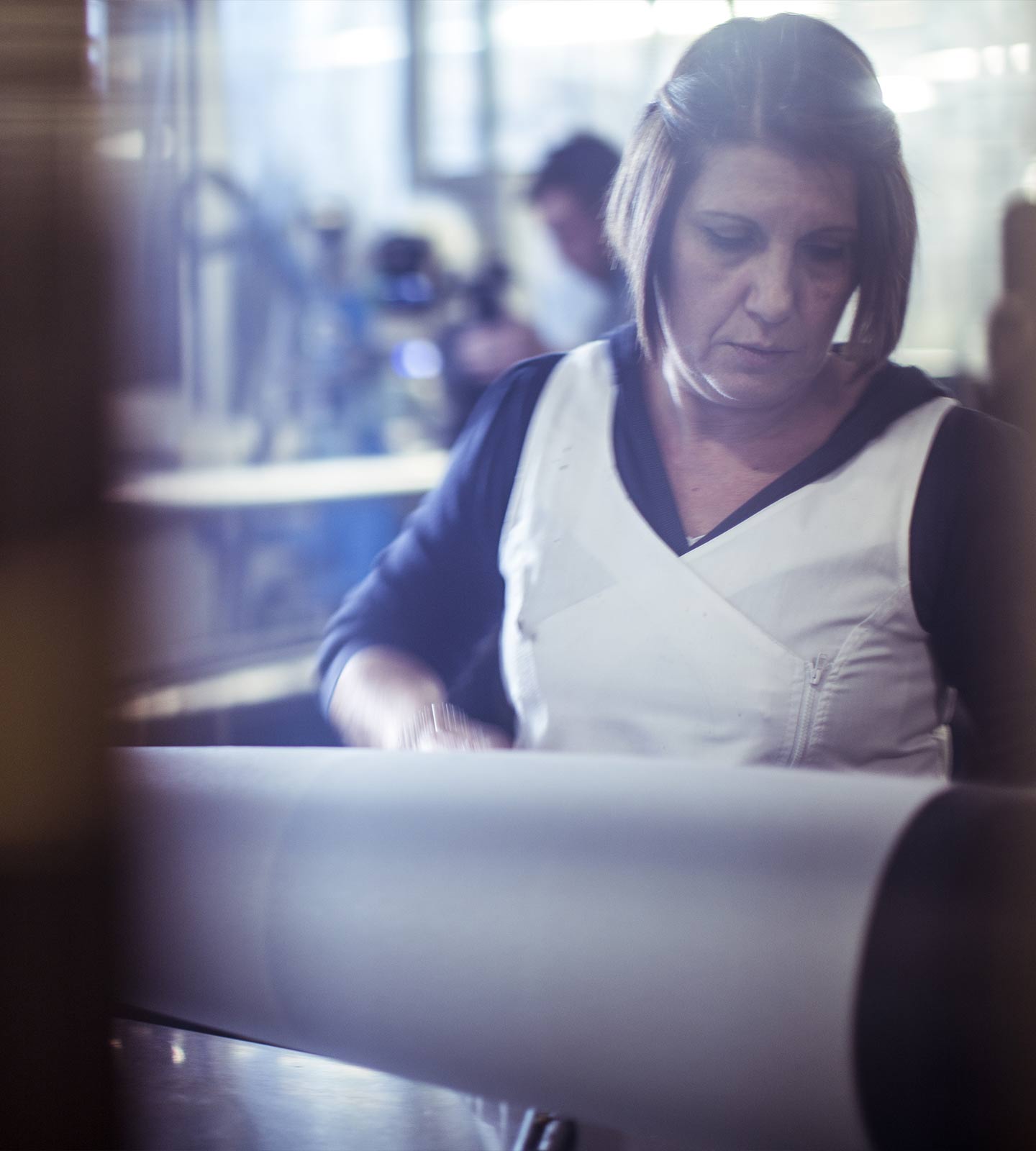
In the middle of the factory filled with roaring machines, one can peak through the glass into the enclosed processing room for Mite, where the workers carefully apply the skin over to the conic mould, reminding of a seamstress dressing a bride. This vivid image gives an idea of the amount of time and precision necessary for this processing phase. The long black carbon fibre filament completes the structure by passing through the winder. The yellow version is made of the delicate semi-finished kevlar yarn. (1500 of the carbon version are sold per year, against approximately 50 in kevlar).
The monumental size of the Twiggy lamp required pushing the limits of carbon fibre in terms of scale, with the lamp’s long rod that is meant to bend and oscillate, constituting a real technical challenge. In order to achieve the desired mechanical characteristics of the curvature, the rod was divided into two parts. The development of the 320 cm-rod involves creating first a more rigid core made of carbon fibre, and then an upper layer made of reinforced fibreglass, to which clips and reinforcing strips at the tip are added. During development, the lamp had been subjected to a load of 9 kg to verify the overall strength and flexibility of the rod and 150 samples were used to achieve the final design. For Twiggy’s diffuser, a glass fabric pigmented with black resin is used. The accumulation of resin is carefully watched and, if necessary, cleaned as the diffuser exits the furnace, in order to achieve a moiré pattern without getting any spots. A top coat of paint gives the lamp its final appearance with black or a dirty white/grey lacquer for the rod .
With the lightness obtained through the composite material, the Twiggy lamp reaches a height of 290 cm, whereas Arco by Castiglioni stands at 250 cm. The weights of the two lamps illustrate the full extent of the decades that have technically elapsed: Twiggy weighs 17 kg, against 64 kg for Arco.
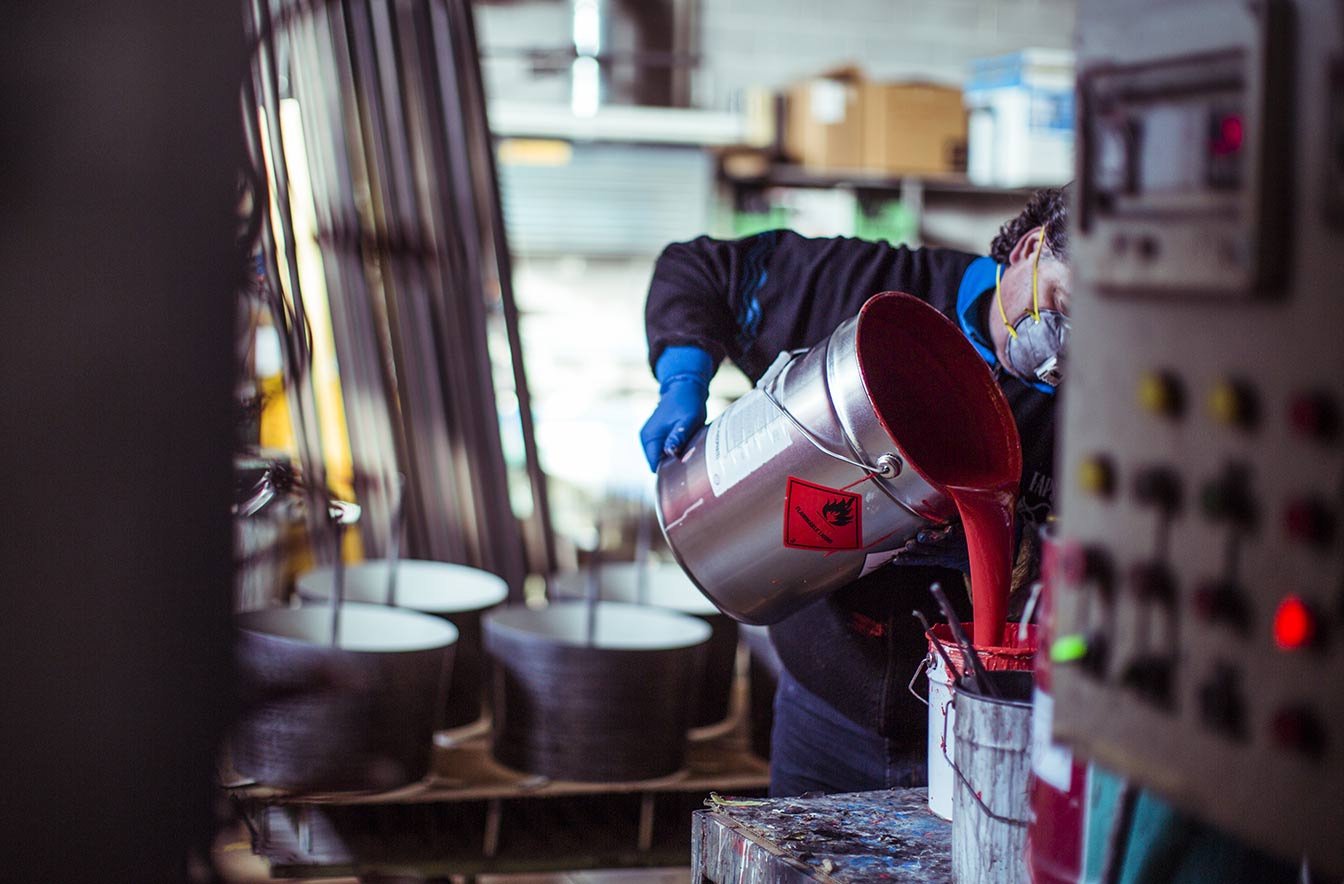
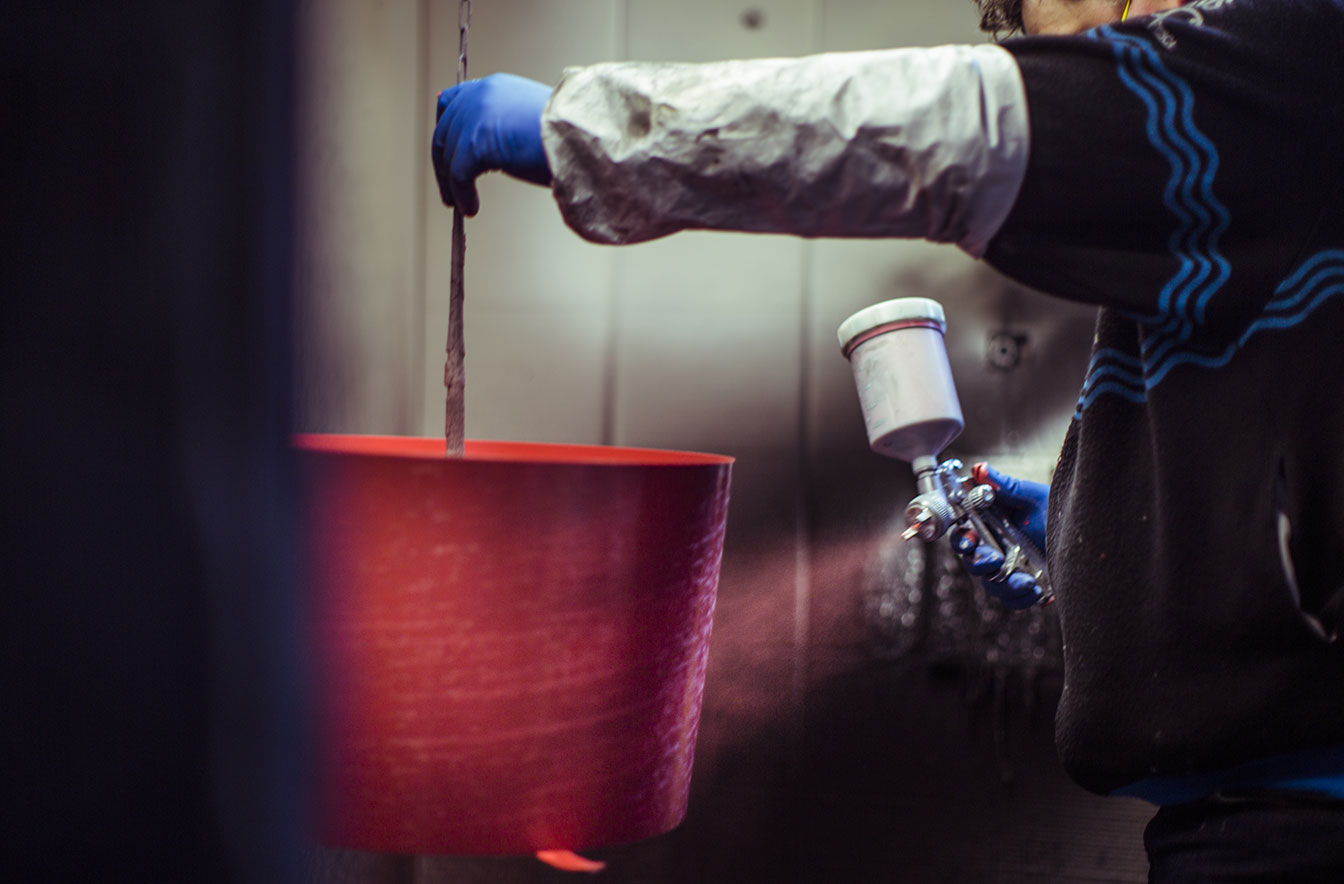
This journey through the contours of industrial craftsmanship is both new and old.
In following a similar strategy for products, Foscarini takes its place, fifty years later, alongside Azucena or by Danese, two companies that bear a historical importance because of their journeys against the tides of production. Without ever pursuing production in-house or on-site, these producers, set up in 1949 (Azucena) and in 1957 (Danese), have spread their works across different industrial districts and production centres, at a time when the acquisition and the concentration of manufacturing equipment seemed to be the main prerequisite for credibility in modern design. They easily moved within the networks of industry and of craftsmanship, internalizing the logic of each (Bruno Danese famously requested from a sewage pipe manufacturer to cut a grey polypropylene pipe at 30° angle and constitute a welt to produce the In Attesa waste bin by Enzo Mari). Foscarini is similarly driven by this type of search for a processing phase that can be transferred to a serial product. The way certain manufacturers complaint about Foscarini’s meticulous pursuit of the optimum quality standard, seems to me like the same complaints made by industrial craftsmen who produced for Danese. Danese applied a strictly limited and aristocratic policy of authors, representing a continuous self-awareness on design (only Mari, Munari and the two Danese). Foscarini has expanded to a policy of multiple inputs, with about 33 designers contributing the Foscarini catalogue.
This multiplication of contributions subtly shifts the balance from the content of the design to the method of production as the nodal point for the perception of the company.
Today successful operations “can only be carried out through the organisation of provisional devices”, temporary smart devices that “avoid all complex structures” as noted by Andrea Branzi (2). Provisional and intensely manual aspects make up the defining dimension of today’s neo-industrial craftsmanship.
The beauty of this intense exploration, where the process is seldom linear and difficult to programme, is the same that can be found in a high-tech space lab. Continuous work, a state of perpetual modification and improvement can produce the kind of innovation where each micro-step forward can arise from a random combination of steps taken in virtually a state of vague unconsciousness due to this hyper-activity. Wernher von Braun, the German engineer and father of space research, first with the V2 rockets which ravaged London then with the Saturn V spaceship for Nasa, thought about research in the same terms as a craftsman thinks about it, defining it as something “I do when I don’t know what I’m doing”.
Manolo De Giorgi
Manolo De Giorgi, architect, opened his studio in Milan in 1989, focusing on renovations, interiors and exhibit design. He has been a member of the editorial staff of the magazines Modo and Domus. He has curated the exhibitions: Techniques Discrètes (1991), 45-63: Un Museo del Design in Italia (1995), Marco Zanuso (1999) Camera con vista (2007), Olivetti: Una bella società (2008), Magnificenza e Progetto (2009), and edited their catalogues. Publications include Carlo Mollino: Interni (Segesta, 2004), Design (Zanichelli, 2007), Enzo Mari (Il Sole/24 Ore, 2011). Since 2010 he has worked with Fondazione Bassetti, investigating the relationship between crafts and design through new expressive media, including the theatre piece Mani grandi senza fine (Piccolo Teatro Milano, 2011) and the film Avanti Artigiani (2014).
Note
1. Luigi Pasinetti, Dinamica strutturale e sviluppo economico, UTET, Turin, 1984, pp. 314-315
2. Andrea Branzi, Modernità debole e diffusa, Skira, Milan, 2006, p. 53
Further details
